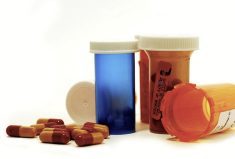We all know by now that cannabis is legal for recreational use in Canada. We also know there are still a number of restrictions and limitations on its use, and we know how to find out exactly what these are.
However, we also hear claims about therapeutic uses for cannabis and about its effectiveness and safety, and this is what may be unclear.
Cannabis or marijuana contains more than 60 pharmacologically active compounds known as cannabinoids. The two that are mentioned most often are tetrahydrocannabinol or THC and cannabidiol or CBD.
Read Also

Ground rules for farm family communications
Establishing meeting ground rules can help your family find ways to communicate that work for your farm. Here are some…
THC is the main psychoactive ingredient in cannabis while CDB is considered the “therapeutic” option as it does not cause intoxication and euphoria.
The production of cannabis is regulated under the Cannabis Act. And yes, you are allowed to produce your own, although it does require a license and you must comply with all the regulations. These products are considered medicinal in nature.
Alternatively, products that contain less than 0.3 per cent THC are considered recreational and can be purchased by adults at licensed retail outlets. The retail products are usually formulations that combine both THC and CBD in various ratios depending upon the degree of psychoactive effect desired.
Regardless of how it is consumed, there may be adverse effects to the central nervous system with cannabis, for example dizziness, drowsiness, euphoria, abnormal thinking, paranoia, difficulty concentrating. You certainly don’t want to drive after you have taken any cannabis-containing substances!
Other effects such as dry mouth, nausea, vomiting, fatigue, abnormal taste, anxiety, agitation and confusion can also occur, although with intermittent use, the symptoms may not be noticeable.
Of more concern is the potential for blood pressure changes and heartbeat irregularities. If you have these medical conditions, cannabis may not be for you.
There are two synthetic formulations of THC. These are nabilone and nabiximol, and they are used, respectively, to treat nausea and vomiting associated with cancer therapy and some forms of spasms associated with multiple sclerosis. Other therapeutic reasons for cannabis use include pain, epilepsy, glaucoma, inflammatory bowel disease, Parkinson’s disease, post traumatic stress disorder, depression, anxiety, insomnia, psychosis, Tourette syndrome and amyotrophic lateral sclerosis (Lou Gehrig’s disease).
Many of these uses have not been studied in depth and the reports of successful treatment tend to be anecdotal in nature. If you are considering using cannabis for any medical condition, check with your health care providers to make sure it is safe for you, and of course use it along with your other treatments. Don’t discard all other recommendations and therapies.
The idea for legalization of recreational cannabis is to curtail illegal distribution, control children’s access to it, and ensure that products are pure and contain the labelled strength. In one study, a variety of cannabis products were purchased online. Over half contained more than 10 per cent above or below the labelled content, and about a third contained intoxicating levels. Contamination with pesticides and heavy metals was also reported.
Children, including teenagers, are cautioned against using cannabis because their nervous systems have not fully developed, meaning that cannabis can potentially cause damage. As well, pregnant women and nursing mothers need to avoid cannabis because of possible nervous system damage to their babies.
If you do use cannabis, make sure that you know the product’s ratio of THC to CBD, as well as its potency. It just makes sense that you know what you are putting into your body.















